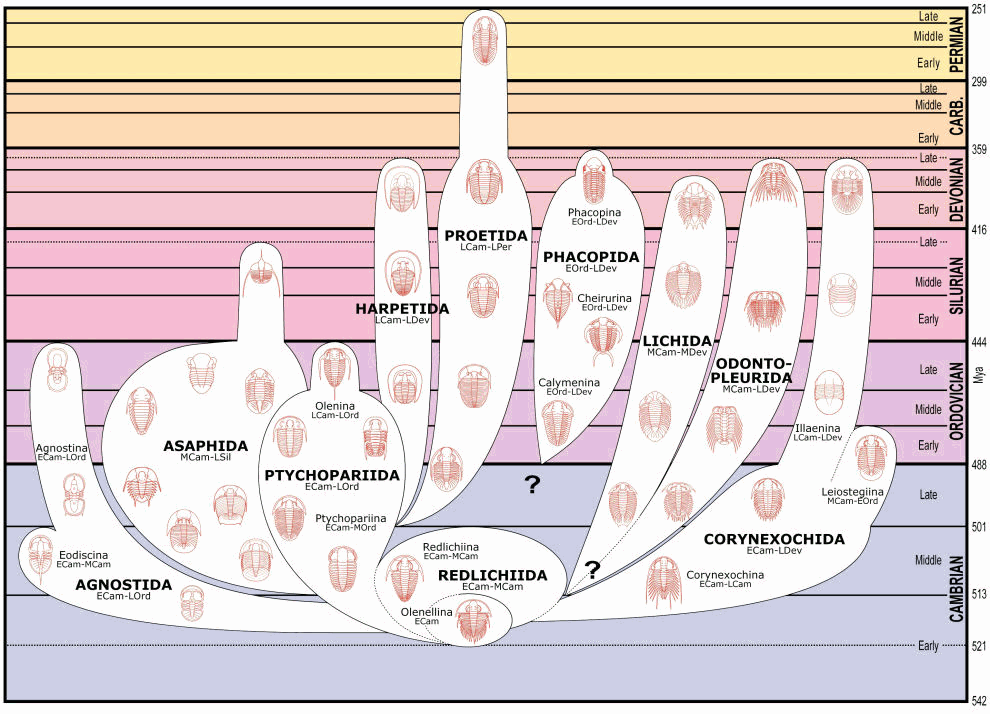 The chart below depicts the geological
periods during which trilobites
existed. The presence of trilobites is one of the
diagnostic features of the Paleozoic Era, the
earliest era of the Phanerozoic Eon. The
Paleozoic portion of the geological scale of eras at the
left is expanded on the right as geological periods, and
the time scale indicates how many millions of years
ago (mya) each period persisted. The chart below depicts the geological
periods during which trilobites
existed. The presence of trilobites is one of the
diagnostic features of the Paleozoic Era, the
earliest era of the Phanerozoic Eon. The
Paleozoic portion of the geological scale of eras at the
left is expanded on the right as geological periods, and
the time scale indicates how many millions of years
ago (mya) each period persisted.
The first appearance of trilobites defines the start of (the yet un-named) Series 2 of the Cambrian (521 mya), and they can be found in strata up to the upper Permian (252* mya), after which trilobites (among a large number of marine organisms) went extinct in the great catastrophe that removed over 90% of all species on earth. The Great Permian Extinction marks the end of the Paleozoic and the start of the Mesozoic. Trilobites are one of the few major groups of organisms that span the majority of the Paleozoic Era. The greatest numbers of trilobite species occurred during the Cambrian and Ordovician periods, after which trilobite extinction trends exceeded radiation events. Toward the end of the Devonian most of the families and orders of trilobites were gone. There were much fewer species in the lone surviving order Proetida (in superfamilies Proetoidea and Aulacopleuroidea) in the Carboniferous and Permian periods. Nevertheless, to have persisted for nearly 300 million years is a testimony to the successful design and adaptability of trilobites. Some scientists even hold out the faint hope that in poorly explored ocean environments, trilobites may still exist, a holdover from truly ancient times. |



